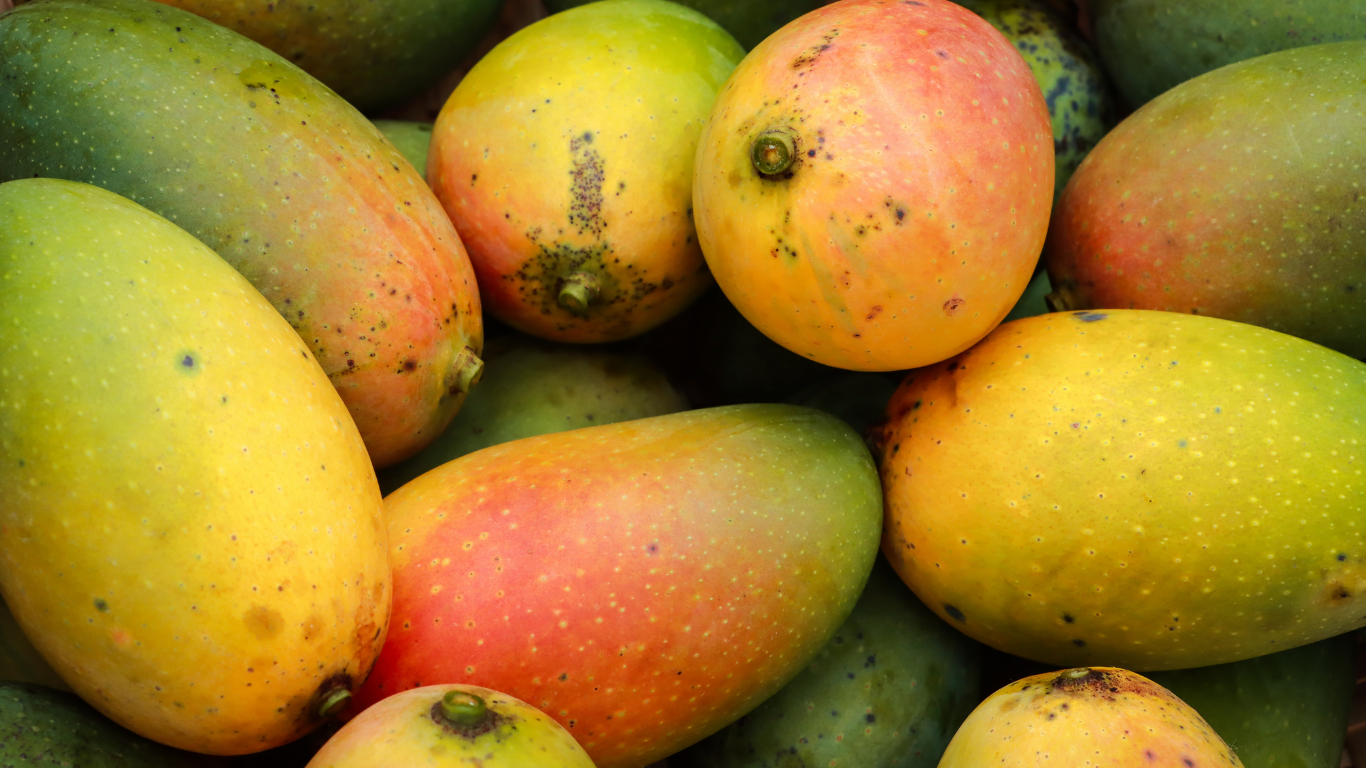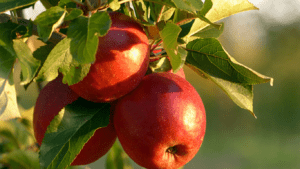Mangoes hold a special place in the hearts of many, and among them, the Amrapali mango stands out as a true gem. Known for its juicy flesh, vibrant flavor, and smooth texture, this variety has captured the attention of fruit lovers across India and beyond. Unlike other mangoes, the Amrapali is a hybrid, carefully crafted to combine the best traits of its parent varieties. Its rich sweetness and compact size make it a favorite for both eating fresh and using in recipes. In this article, we’ll dive into the world of the Amrapali mango, exploring its origins, unique qualities, and why it’s so loved. From its cultivation to its role in kitchens and markets, let’s uncover what makes this mango a standout.
What Makes the Amrapali Mango Special?
The Amrapali mango is a delightful blend of flavor and convenience. It’s a hybrid of the Dashehari and Neelum varieties, combining the former’s sweetness with the latter’s long shelf life. This mango is smaller than many others, typically weighing 150-300 grams, making it perfect for a quick snack. Its skin is smooth, with green and yellow hues that turn golden when ripe. The flesh is deep orange, juicy, and nearly fiber-free, offering a melt-in-the-mouth experience. Its intense sweetness with a slight tangy kick sets it apart, appealing to all taste buds. Farmers love it too, as it’s disease-resistant and yields high crops. Whether eaten fresh, juiced, or added to desserts, the Amrapali’s versatility and rich taste make it a household favorite across India.
A Perfect Balance of Sweet and Tangy
The Amrapali mango strikes a unique balance between sweet and tangy. Its flavor is rich and sugary, but a subtle tartness keeps it from being overwhelming. This mix makes every bite refreshing, especially on a hot summer day. The smooth, juicy texture enhances the taste, making it a go-to for mango lovers who want something both sweet and lively. Whether you’re slicing it for a fruit salad or blending it into a smoothie, this balance shines through.
Why It’s Loved by Farmers
Farmers adore the Amrapali for practical reasons. It grows well in various climates, resisting common pests and diseases. The trees are compact, making them easier to manage than larger varieties. They also produce a high yield, often bearing fruit twice a year in some regions. This reliability, combined with the fruit’s popularity, ensures farmers get a good return, making Amrapali a top choice for orchards.
The Origins of the Amrapali Mango
The Amrapali mango was born in the 1970s at the Indian Agricultural Research Institute in New Delhi. Scientists aimed to create a mango that combined great taste with practical growing traits. By crossbreeding the sweet Dashehari with the hardy Neelum, they crafted a variety that’s both delicious and farmer-friendly. Named after the legendary courtesan Amrapali, this mango reflects beauty and charm in its flavor and appearance. It quickly gained popularity in northern India, especially in Uttar Pradesh and Bihar, where it thrives in the subtropical climate. Today, it’s grown across India and exported to countries like the UK and USA, where its unique qualities have won over international markets. The Amrapali’s journey from a lab experiment to a global favorite is a testament to its exceptional appeal.
The Science Behind the Hybrid
Creating the Amrapali was no small feat. Scientists carefully selected the Dashehari for its sweetness and the Neelum for its durability. Through controlled cross-pollination, they developed a mango that’s small, sweet, and long-lasting. The hybrid’s compact trees made it ideal for dense planting, maximizing orchard space. This scientific success ensured the Amrapali’s place as a reliable and tasty variety that’s easy to grow and sell.
Its Rise to Fame
After its creation, the Amrapali quickly caught on in India’s mango-loving regions. Farmers in Uttar Pradesh and Bihar embraced it for its high yields and market demand. By the 1990s, it was a staple in local markets, and soon, exporters noticed its potential. Its ability to stay fresh during shipping made it a hit abroad, turning the Amrapali into a global ambassador for Indian mangoes.
Growing the Amrapali Mango
Cultivating the Amrapali mango is a labor of love, but its hardy nature makes it rewarding. The trees thrive in warm, humid climates with well-drained soil, typical of India’s mango belt. They’re smaller than other mango trees, growing to about 10-15 feet, which makes harvesting easier. Farmers plant them closely to maximize land use, and with proper care, trees start bearing fruit in just 3-4 years. Regular pruning and pest control keep them healthy, while irrigation ensures juicy fruit. The Amrapali’s resistance to diseases like powdery mildew makes it less demanding than other varieties. Harvest season, typically May to July, brings a flood of golden mangoes to markets, delighting consumers and boosting farmers’ incomes.
Ideal Conditions for Growth
Amrapali mangoes need warm temperatures, ideally 25-35°C, and moderate rainfall. They do best in loamy or sandy soil with good drainage to prevent root rot. Farmers often use organic fertilizers to boost growth and flavor. The trees need plenty of sunlight to produce sweet, vibrant fruit, making India’s sunny plains perfect for cultivation. With the right conditions, Amrapali trees flourish with minimal fuss.
Harvesting and Yield
Harvesting Amrapali mangoes is straightforward thanks to the trees’ small size. Farmers pick the fruit when it’s firm but starting to yellow, ensuring it ripens perfectly off the tree. Each tree can yield 50-100 kg of mangoes annually, a big win for small-scale farmers. The fruit’s long shelf life means it can be stored or shipped without losing quality, making it a market favorite.
Culinary Uses of the Amrapali Mango
The Amrapali mango’s sweet, juicy flesh makes it a star in the kitchen. Its smooth texture is perfect for slicing into salads, blending into smoothies, or eating fresh with a sprinkle of chili powder for a spicy twist. In India, it’s a key ingredient in desserts like mango kulfi or aamras, a creamy mango puree served with puris. Its vibrant flavor also shines in chutneys, jams, and salsas, adding a tropical touch to savory dishes. For bakers, Amrapali mangoes elevate cakes and tarts with their rich taste. Even in drinks, from lassis to cocktails, this mango adds a burst of sweetness. Its versatility makes it a go-to for home cooks and chefs alike, turning simple dishes into something special.
Desserts and Sweets
Amrapali mangoes are a dessert lover’s dream. Their smooth, fiber-free flesh blends into creamy treats like mango ice cream or kulfi. Aamras, a popular Indian dish, showcases their sweetness when pureed and paired with warm puris. Bakers use them in cakes, muffins, or tarts, where their juicy texture adds moisture and flavor. A simple mango sorbet made from Amrapali is a refreshing summer treat.
Savory Dishes and Drinks
Beyond sweets, Amrapali mangoes shine in savory recipes. Their sweet-tangy profile makes them ideal for chutneys, pairing well with spices like cumin or chili. They add a fresh twist to salsas for grilled meats or tacos. In drinks, Amrapali mangoes elevate lassis, juices, or even mango margaritas. Their bold flavor transforms simple recipes into vibrant, tropical delights that impress any palate.
Health Benefits of the Amrapali Mango
Amrapali mangoes aren’t just tasty—they’re packed with health benefits. Rich in vitamins A and C, they boost immunity and promote healthy skin and eyes. Their high fiber content aids digestion, while antioxidants like quercetin fight inflammation and protect against cell damage. The mango’s natural sugars provide a quick energy boost, perfect for a midday snack. They also contain small amounts of potassium and magnesium, supporting heart health. Eating Amrapali mangoes in moderation can be part of a balanced diet, offering a sweet way to stay healthy. Just be mindful of portion sizes, as their sweetness can add up in calories. This mango is proof that good taste and good health can go hand in hand.
Nutritional Powerhouse
Amrapali mangoes are loaded with nutrients. A single mango provides a hefty dose of vitamin C, helping fight colds and keeping skin glowing. Vitamin A supports vision and immunity, while fiber keeps your digestive system happy. Antioxidants in the fruit combat free radicals, potentially lowering the risk of chronic diseases. It’s a guilt-free treat that nourishes your body.
A Sweet Energy Boost
The natural sugars in Amrapali mangoes make them a great pick-me-up. Whether you’re feeling sluggish or need a pre-workout snack, their carbs provide quick energy without the crash of processed sweets. Potassium and magnesium also help with muscle function and heart health, making this mango a smart choice for active folks or anyone needing a healthy boost.
The Amrapali Mango in Markets
The Amrapali mango is a star in both local and global markets. In India, it’s a common sight in summer markets, where its bright color and sweet aroma draw crowds. Its small size and long shelf life make it ideal for export, reaching countries like the USA, UK, and Middle East. Exporters value its ability to stay fresh during long journeys, ensuring it arrives ripe and flavorful. In grocery stores, it’s often sold at a premium due to its quality and demand. Whether at a roadside stall in Mumbai or a supermarket in London, the Amrapali’s appeal is universal, bringing a taste of India’s summer to fruit lovers everywhere.
Local Popularity in India
In India, Amrapali mangoes are a summer staple. From street vendors to high-end fruit shops, they’re everywhere during the May-July season. Their affordability and sweet taste make them a favorite for families. In regions like Uttar Pradesh, entire markets buzz with Amrapali sales, as buyers snap them up for home use or gifting during festivals.
Global Export Success
The Amrapali’s long shelf life and sturdy nature make it a top choice for export. It travels well, staying fresh for weeks, which is crucial for reaching distant markets. Countries like the UK and USA import it in bulk, where it’s sold in specialty stores or online. Its global rise reflects its ability to win over mango lovers worldwide with its unbeatable flavor.
Why the Amrapali Mango Stands Out
The Amrapali mango’s charm lies in its perfect blend of taste, practicality, and versatility. Its sweet-tangy flavor and smooth texture make it a joy to eat, while its compact size and long shelf life suit both farmers and consumers. From its scientific origins to its global reach, this mango has carved a unique place in the world of fruit. Whether you’re biting into a fresh Amrapali, blending it into a smoothie, or savoring it in a dessert, it delivers a burst of summer in every bite. Its popularity in markets and kitchens shows no signs of slowing, proving that this hybrid mango is here to stay as a beloved favorite.
A Fruit for All Seasons
While Amrapali mangoes peak in summer, their long shelf life means you can enjoy them beyond the season. Properly stored, they stay fresh for weeks, letting you savor their sweetness year-round. Freezing the pulp or making preserves extends their joy, making Amrapali a fruit that adapts to any time or place.
A Cultural Icon
In India, the Amrapali mango is more than fruit—it’s a symbol of summer and celebration. It’s shared during festivals, gifted to loved ones, and featured in countless recipes. Named after a legendary figure, it carries a sense of heritage, connecting people to India’s rich agricultural and cultural traditions with every delicious bite.




